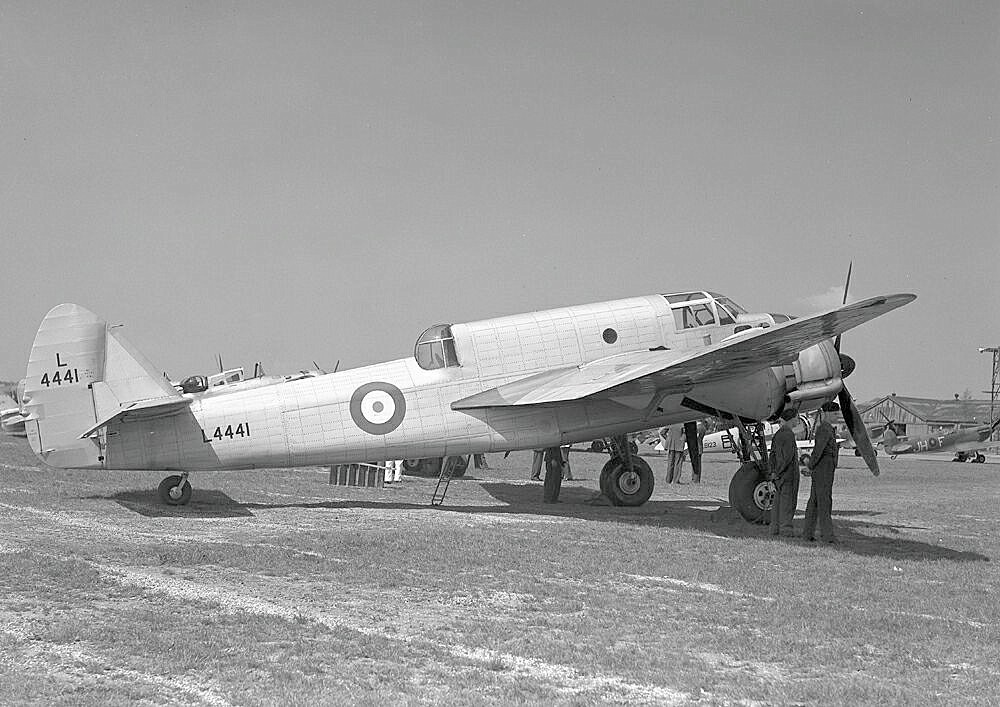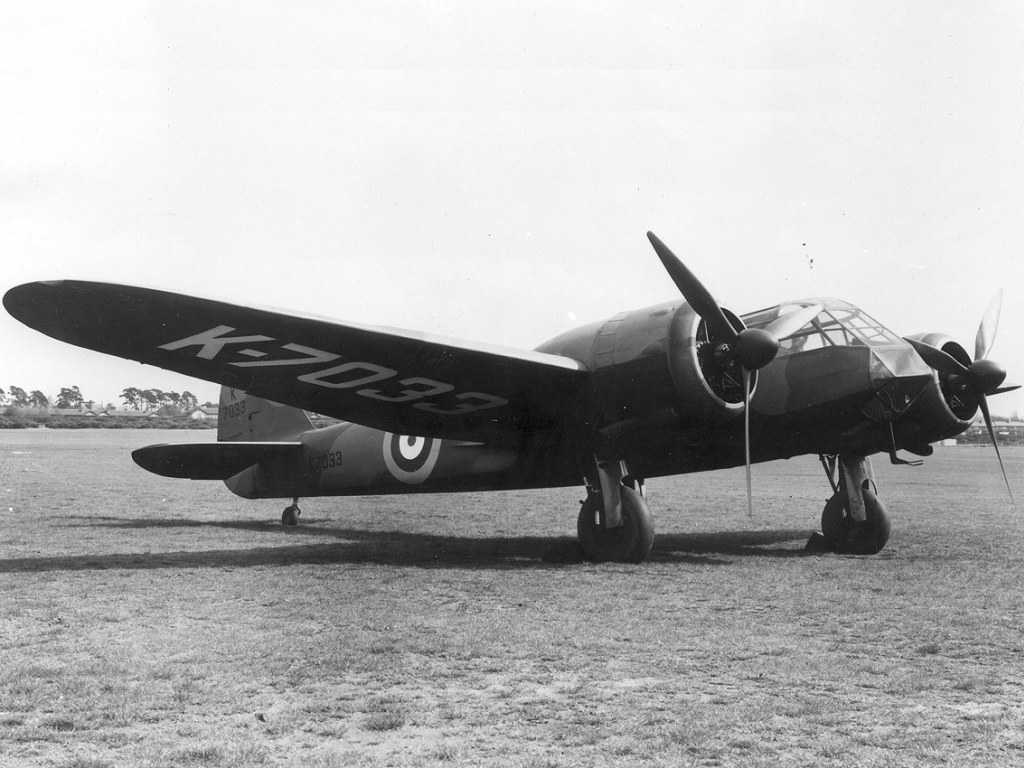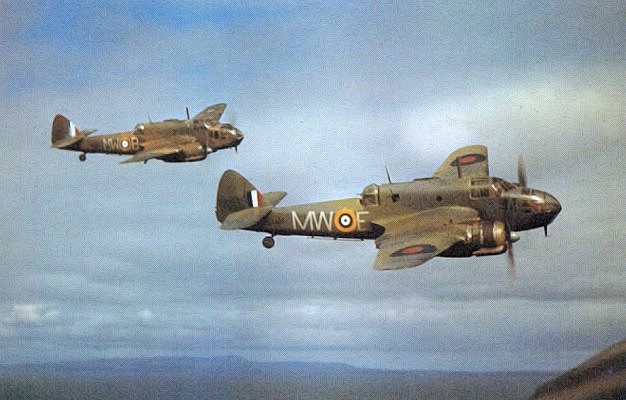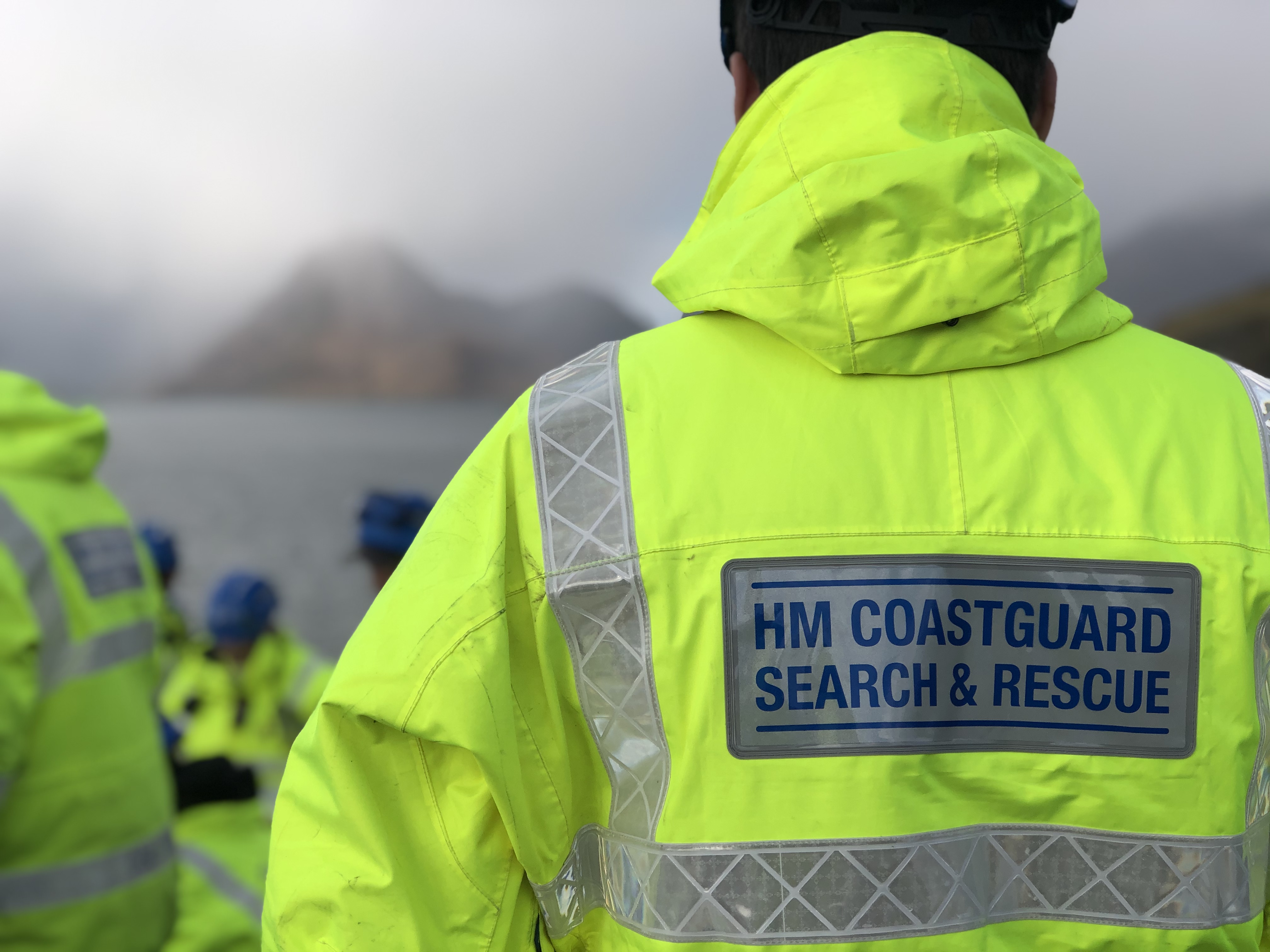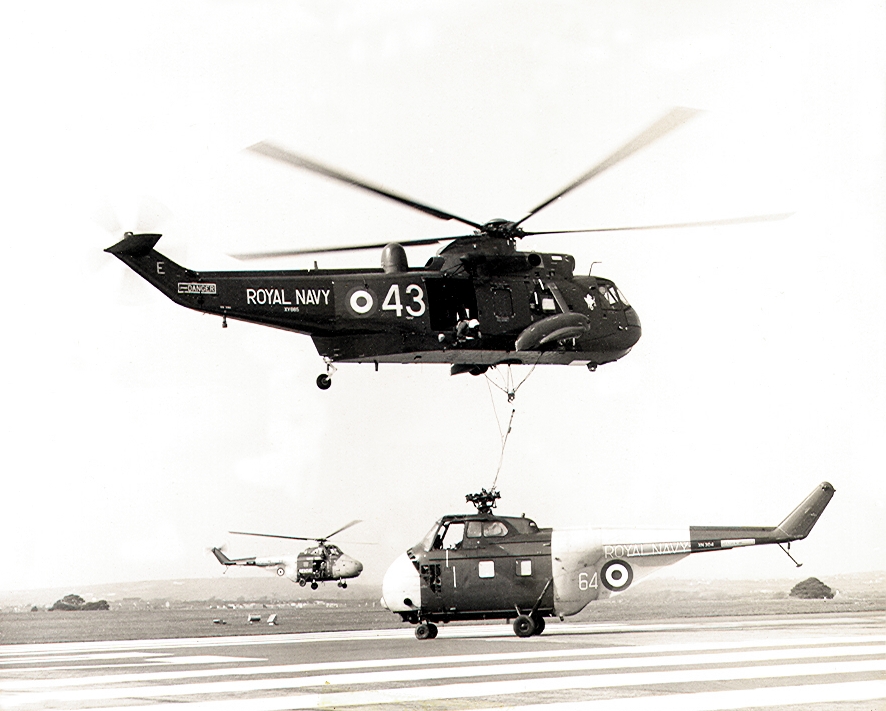|
RAF Chivenor
Royal Air Force Chivenor or RAF Chivenor was a Royal Air Force station located on the northern shore of the River Taw estuary, on the north coast of Devon, England. The nearest towns are Barnstaple and Braunton. Originally a civil airfield opened in the 1930s, the site was taken over by the Royal Air Force (RAF) in May 1940 for use as a RAF Coastal Command Station. After the Second World War, the station was largely used for training, particularly weapons training. During the 1950s and 1960s, No. 229 Operational Conversion Unit RAF (229 OCU) used Hawker Hunter aircraft for training. In 1974 the station was left on "care and maintenance", though No. 624 Volunteer Gliding Squadron (624 VGS) continued to fly from there. The RAF returned in 1979, forming 2 Tactical Weapons Unit (2 TWU) which flew BAE Systems Hawks, from 1979 until the unit was renamed as No. 7 Flying Training School RAF (7 FTS) in 1992. In 1994, 7 FTS left Chivenor, merging with No. 4 Flying Training School RAF (4 ... [...More Info...] [...Related Items...] OR: [Wikipedia] [Google] [Baidu] |
Braunton
Braunton is a large village, civil parish, ecclesiastical parish and former manor in Devon. The village is situated west of Barnstaple. It is one of the largest villages in Devon with a population at the 2021 census of 10,217 people. There are two electoral wards (East and West). Their joint population at the above census was 8,218. Within the parish is the fertile, low-lying Braunton Great Field, which adjoins the undulating Braunton Burrows, the Core Area in North Devon Biosphere Reserve, the largest psammosere (sand dune system) in England. It confronts the Atlantic Ocean at the west of the parish at the large beach of Saunton Sands, one of the South West's international-standard surfing beaches. Toponymy ''Braunton'' is derived from the two Old English elements: ''brōm'', meaning broom shrub, and ''tūn'', meaning "Town" or "settlement". It thus signifies: "Town at the Bottom". The name is recorded in the Domesday Book of 1086 as ''BRANTONE''. Topography The South We ... [...More Info...] [...Related Items...] OR: [Wikipedia] [Google] [Baidu] |
RM Instow
RM Instow, also known as Arromanches Camp, is a military installation operated by the Royal Marines at Instow in North Devon located south west of Barnstaple, Devon, and north east of Bideford, Devon, England. History The site, which was established in 1939, was used as a training facility for troops preparing for the Normandy landings at Arromanches on Gold Beach in June 1944 during the Second World War. In the 1970s the towns of Instow and Arromanches instigated an arrangement whereby families visited each other's town every other year staying with a host family. Operations The site is split into two different areas, firstly the camp where the workshops and accommodation are located and secondly the beach located south-west which is where the main landing craft are based. The site is occupied by 11 Amphibious Trials and Training Squadron, part of 1 Assault Group Royal Marines, which carries out training for operations which include disembarking from landing craft, wading acr ... [...More Info...] [...Related Items...] OR: [Wikipedia] [Google] [Baidu] |
Bristol Beaufort
The Bristol Beaufort (manufacturer designation Type 152) is a British twin-engined torpedo bomber designed by the Bristol Aeroplane Company, and developed from experience gained designing and building the earlier Blenheim light bomber. At least 1,180 Beauforts were built by Bristol and other British manufacturers. The Australian government's Department of Aircraft Production (DAP) also manufactured variants of the Beaufort. These are often known collectively as the DAP Beaufort. More than 700 Australian-built Beauforts saw service with the Royal Australian Air Force in the South West Pacific theatre, where they were used until the end of the war. Beauforts first saw service with Royal Air Force Coastal Command and then the Royal Navy Fleet Air Arm from 1940. They were used as torpedo bombers, conventional bombers and mine-layers until 1942,Robertson 1976, p. 30. when they were removed from active service and were then used as trainer aircraft until being declared obsolete i ... [...More Info...] [...Related Items...] OR: [Wikipedia] [Google] [Baidu] |
Bristol Blenheim
The Bristol Blenheim is a British light bomber aircraft designed and built by the Bristol Aeroplane Company (Bristol) which was used extensively in the first two years of the Second World War, with examples still being used as trainers until the end of the war. Development began with the ''Type 142'', a civil airliner, in response to a challenge from Lord Rothermere to produce the fastest commercial aircraft in Europe. The ''Type 142'' first flew in April 1935, and the Air Ministry, impressed by its performance, ordered a modified design as the ''Type 142M'' for the Royal Air Force (RAF) as a bomber. Deliveries of the newly named Blenheim to RAF squadrons commenced on 10 March 1937. In service the Type 142M became the Blenheim Mk.I which would be developed into the longer Type 149, designated the Blenheim Mk.IV, except in Canada where Fairchild Canada built the Type 149 under licence as the Bolingbroke. The Type 160 Bisley was also developed from the Blenheim, but was already o ... [...More Info...] [...Related Items...] OR: [Wikipedia] [Google] [Baidu] |
Bristol Beaufighter
The Bristol Type 156 Beaufighter (often called the Beau) is a British multi-role aircraft developed during the Second World War by the Bristol Aeroplane Company. It was originally conceived as a heavy fighter variant of the Bristol Beaufort torpedo bomber. The Beaufighter proved to be an effective night fighter, which came into service with the Royal Air Force (RAF) during the Battle of Britain, its large size allowing it to carry heavy armament and early airborne interception radar without major performance penalties. The Beaufighter was used in many roles; receiving the nicknames ''Rockbeau'' for its use as a rocket-armed ground attack aircraft and ''Torbeau'' as a torpedo bomber against Axis shipping, in which it replaced the Beaufort. In later operations, it served mainly as a maritime strike/ground attack aircraft, RAF Coastal Command having operated the largest number of Beaufighters amongst all other commands at one point. The Royal Australian Air Force (RAAF) also m ... [...More Info...] [...Related Items...] OR: [Wikipedia] [Google] [Baidu] |
Coastal Command
RAF Coastal Command was a formation within the Royal Air Force (RAF). It was founded in 1936, when the RAF was restructured into Fighter, Bomber and Coastal Commands and played an important role during the Second World War. Maritime Aviation had been neglected in the inter-war period, due to disagreements between the Royal Navy (RN) and RAF over the ownership, roles and investment in maritime air power. The Admiralty's main concern until 1937 was the return of the Fleet Air Arm to the Royal Navy while the RAF prioritised the development of a bombing force to provide a deterrent. Coastal Command was referred to as the "Cinderella Service" by A V Alexander, the First Lord of the Admiralty in November 1940. Soon after RAF Coastal Area was elevated to Coastal Command, its headquarters moved from Lee-on-Solent to Northwood in northwest London. During the Second World War, Coastal Command's most important contribution was the protection of Allied convoys from attacks by the Germ ... [...More Info...] [...Related Items...] OR: [Wikipedia] [Google] [Baidu] |
Air Ministry
The Air Ministry was a department of the Government of the United Kingdom with the responsibility of managing the affairs of the Royal Air Force, that existed from 1918 to 1964. It was under the political authority of the Secretary of State for Air. Organisations before the Air Ministry The Air Committee On 13 April 1912, less than two weeks after the creation of the Royal Flying Corps (which initially consisted of both a naval and a military wing), an Air Committee was established to act as an intermediary between the Admiralty and the War Office in matters relating to aviation. The new Air Committee was composed of representatives of the two war ministries, and although it could make recommendations, it lacked executive authority. The recommendations of the Air Committee had to be ratified by the Admiralty Board and the Imperial General Staff and, in consequence, the Committee was not particularly effective. The increasing separation of army and naval aviation from 191 ... [...More Info...] [...Related Items...] OR: [Wikipedia] [Google] [Baidu] |
3 Commando Brigade
3 Commando Brigade (3 Cdo Bde), previously called the 3rd Special Service Brigade, is a commando formation of the British Armed Forces. It is composed of the Royal Marine Commandos, alongside commando qualified sailors, soldiers and airmen from the British Army, Royal Navy and Royal Air Force. The brigade was formed on 14 February 1942, during the Second World War, with a mixture of Army Commando and Royal Marine Commando units, and was deployed to the South-East Asian Theatre of World War II to conduct operations against the invading forces of Imperial Japan, such as the Burma Campaign. After the Second World War, the Army Commandos were disbanded and the brigade became a Royal Marine formation. Recently, 3 Commando Brigade has again become a mixed formation with the addition of commando qualified soldiers from the Royal Artillery and Royal Engineers to provide support for the Royal Marine Commandos. Since the end of the Second World War, it has been involved in a number ... [...More Info...] [...Related Items...] OR: [Wikipedia] [Google] [Baidu] |
Her Majesty's Coastguard
His Majesty's Coastguard (HMCG) is a section of the Maritime and Coastguard Agency responsible, through the Secretary of State for Transport to Parliament, for the initiation and co-ordination of all maritime search and rescue (SAR) within the UK Maritime Search and Rescue Region. This includes the mobilisation, organisation and tasking of adequate resources to respond to persons either in distress at sea, or to persons at risk of injury or death on the cliffs or shoreline of the United Kingdom. It is also responsible for land based search and rescue helicopter operations from 2015. The chief executive of the Maritime and Coastguard Agency is Brian Johnson. Operational control of the service is the responsibility of the Director of HM Coastguard, Claire Hughes. His Majesty's Coastguard is not a military force nor law enforcement agency, with coastal defence being the responsibility of the Royal Navy, law enforcement being the responsibility of the local territorial police for ... [...More Info...] [...Related Items...] OR: [Wikipedia] [Google] [Baidu] |
Bristow Helicopters
Bristow Helicopters Limited is a British civil helicopter operator originally based at Aberdeen Airport, Scotland, which is currently a part of the U.S.-based Bristow Group (, S&P 600 component) which in turn has its corporate headquarters in Houston, Texas, U.S. In 2020, Bristow Group was merged with Era Helicopters, a large U.S.-based commercial helicopter operator that was previously a division of Era Aviation, with the two companies then continuing to use the Bristow name. Bristow Helicopters was established by Alan Bristow in June 1955; two years later, it acquired its first pair of helicopters in the form of the Westland Widgeon. The company quickly expanded overseas as well as various services, including helicopter training, oil exploration, search and rescue, and charter flights. Having entered the African market in 1960, Nigeria became Bristow's biggest profit centre during the 1970s. Entering the North Sea market, also during the 1960s, Bristow became Aberdeen Airp ... [...More Info...] [...Related Items...] OR: [Wikipedia] [Google] [Baidu] |
2004 Boscastle Flood
The 2004 Boscastle flood ( kw, An Lanwes Kastel Boterel 2004) occurred on Monday, 16 August 2004 in the two villages of Boscastle and Crackington Haven in Cornwall, England, United Kingdom. The villages suffered extensive damage after flash floods caused by an exceptional amount of rain that fell over eight hours that afternoon. The flood in Boscastle was filmed and extensively reported but the floods in Crackington Haven and Rocky Valley were not mentioned beyond the local news. The floods were the worst in local memory. A study commissioned by the Environment Agency from hydraulics consulting firm HR Wallingford concluded that it was among the most extreme ever experienced in Britain. The peak flow was about 140 m3/s, between 5:00 pm and 6:00 pm BST. The annual chance of this (or a greater) flood in any one year is about 1 in 400. The probability each year of the heaviest three-hour rainfall is about 1 in 1300 (although rainfall probability is not the same as flood ... [...More Info...] [...Related Items...] OR: [Wikipedia] [Google] [Baidu] |
Westland Sea King
The Westland WS-61 Sea King is a British licence-built version of the American Sikorsky S-61 helicopter of the same name, built by Westland Helicopters. The aircraft differs considerably from the American version, with Rolls-Royce Gnome engines (derived from the US General Electric T58), British-made anti-submarine warfare systems and a fully computerised flight control system. The Sea King was primarily designed for performing anti-submarine warfare (ASW) missions. A Sea King variant known as the Commando was devised by Westland to serve as a troop transport. In British service, the Westland Sea King provided a wide range of services in both the Royal Navy and the Royal Air Force. As well as wartime roles in the Falklands War, the Gulf War, the Bosnian War, the Iraq War and the Afghanistan War, the Sea King is perhaps most well known in its capacity as a Royal Navy Search and Rescue (red and grey livery) and RAF Search and Rescue Force (yellow livery) helicopter. The S ... [...More Info...] [...Related Items...] OR: [Wikipedia] [Google] [Baidu] |


